A friend of mine visited Malta not too long ago. She’s an avid traveler and flies to different parts of the world several times a year. She’s normally reserved in her comments but something about her Malta posts were different. They were gushing.
She enjoyed Malta so much that she seriously considered renting an apartment in Valletta long-term. She loved its weather, sweeping ocean views, and gorgeous Baroque architecture. Being a Traveleater herself, it didn’t take long for her to fall in love with traditional Maltese food. It’s a cuisine that can best be described as Mediterranean fare with continental and Arabic influences.
Malta receives over two million visitors a year. There are many reasons to visit this tiny island nation just south of Sicily, but one of the best has to be the food.
MALTESE FOOD QUICK LINKS
If you’re planning a trip to Malta and want to really dive into the cuisine, then you may be interested in going on a food tour.
TOURS & OTHER SERVICES
- Food Tours: Food and Wine/Drinking Tours in Malta
- eSIM: Malta eSIM
Save This on Pinterest!
No time to read this article on the food in Malta? Click on the save button and pin it for later!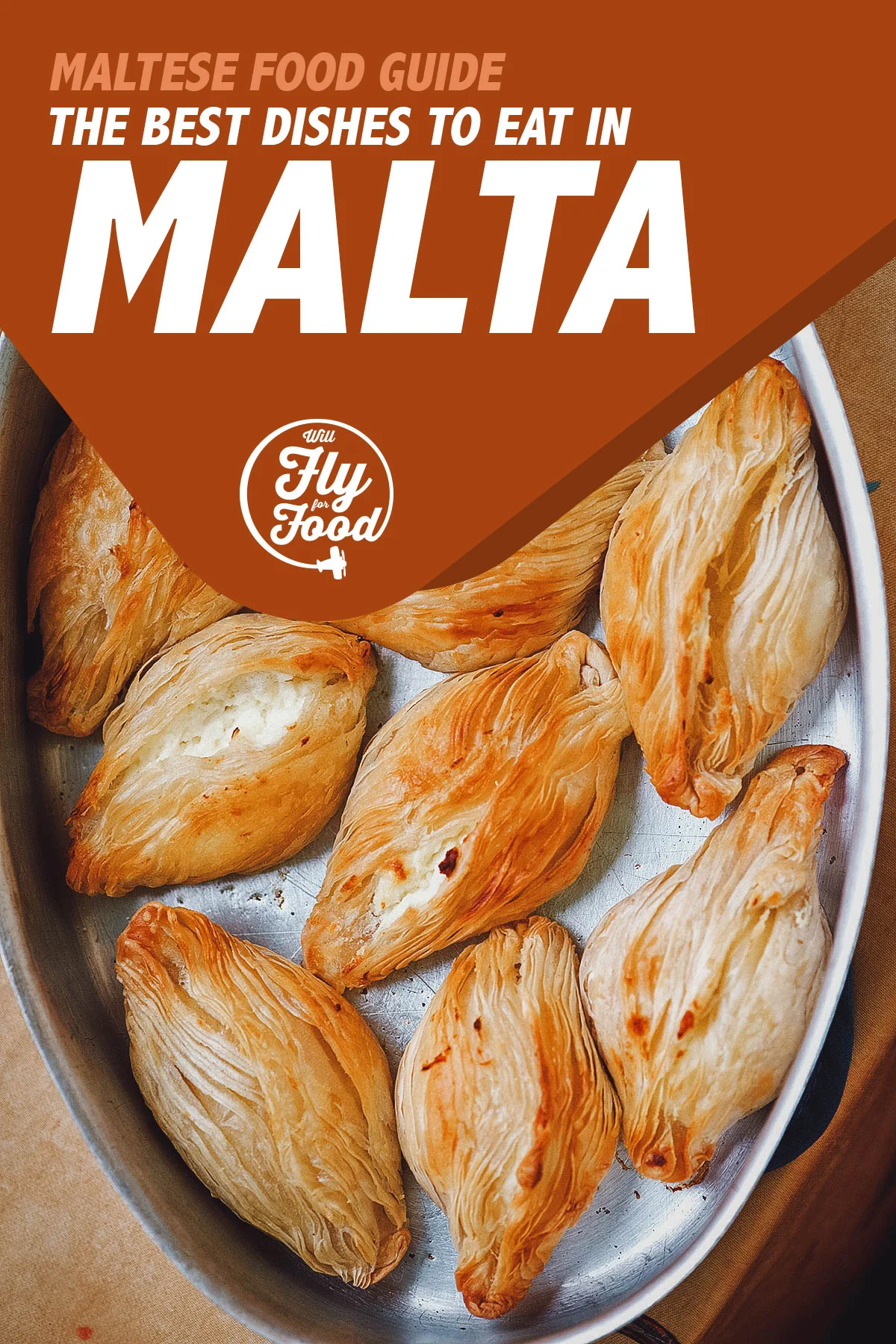
Photo by RenataA
WHAT IS TRADITIONAL MALTESE FOOD?
Maltese cuisine is a reflection of its history and many culinary influences. Situated between Sicily and North Africa along popular trade routes in the Mediterranean Sea, this tiny island nation has played host to many traders and invaders, each one leaving a lasting imprint on its cuisine.
Traditional Maltese food shows strong influences from Italian, Spanish, French, British, Arabic, and other Mediterranean cuisines. Italian-Arab influences came by way of Sicily while the 200-year presence of the Knights of St. John introduced ingredients and cooking techniques from France, Italy, and Spain.
Interestingly, the Knights also brought with them various foods from the New World, one of the most important being chocolate. In fact, it’s believed that Malta is one of the first countries in Europe to taste chocolate (after Spain).
Olive trees have been grown in Malta for over 5,000 years and produce some of the best olive oil in the world. Other key products include tomatoes, oranges, and honey. Maltese blood oranges are a key ingredient in the French “Sauce Maltaise” while Maltese wild thyme honey is considered by many to be the best in the Mediterranean.
THE BEST FOOD IN MALTA
A seasoned Traveleater will never fly unprepared. Remember these fifteen traditional Maltese dishes on your next visit to Malta.
1. Pastizz
There’s no better way to start this Maltese food guide than with pastizz, a savory flaky pastry typically stuffed with a filling of ricotta cheese or mushy peas. It’s a Maltese national dish and available everywhere in the country – at pastizzi shops, cafes, bars, and restaurants.
This popular Maltese street food is usually diamond-shaped or round. They’re made with a phyllo-like pastry that’s stretched and rolled with layers of butter (and/or shortening) in between to achieve the pastry’s characteristic flakiness. The most common fillings are ricotta (pastizzi tal-irkotta) and curried peas (pastizzi tal-piżelli) but they ban be filled with other ingredients as well like anchovies, corned beef, and apple.
The pastizz is so popular in Malta that it’s used in many idioms and expressions. It can be used as a euphemism to describe the female sexual organ or as a metaphor for a pushover. The phrase jinbiegħu bħall-pastizzi is the Maltese equivalent of the English saying “selling like hot cakes”, which is used to describe anything that’s in high demand.
It’s important not to confuse the Maltese pastizz with the Italian baked turnover of the same name, which is more like a calzone.
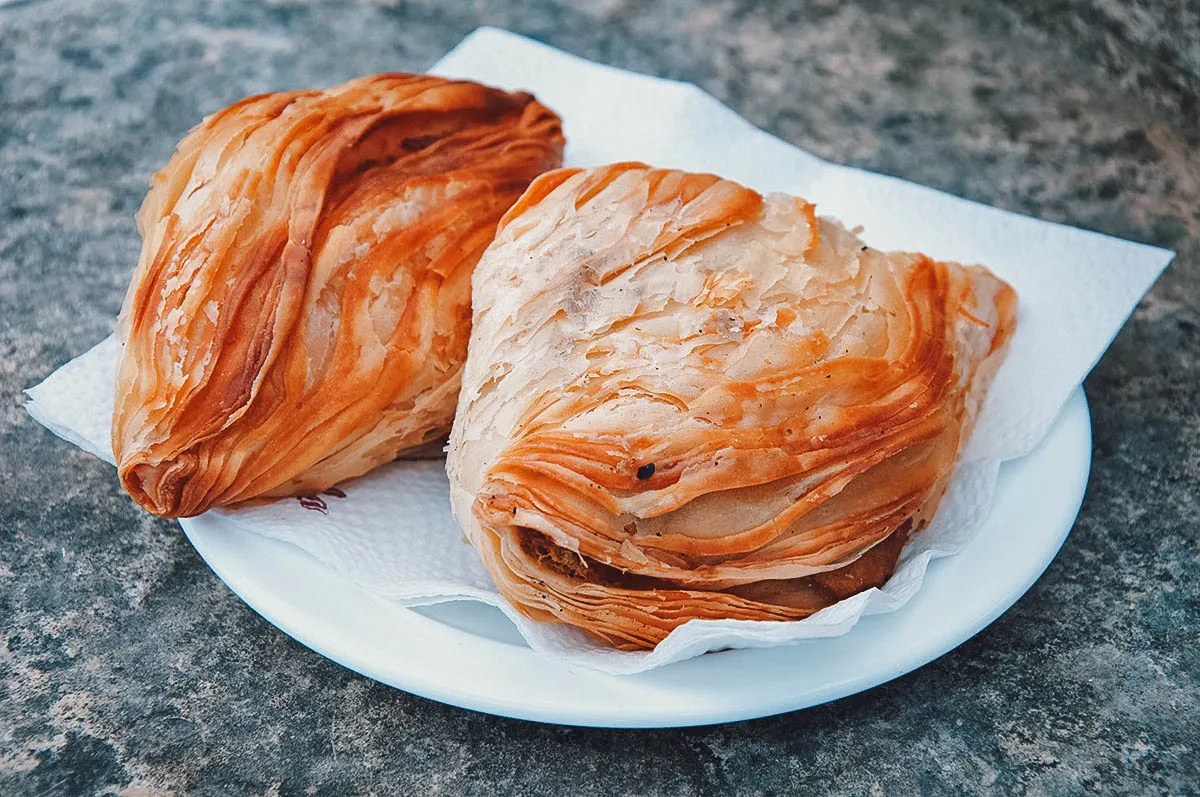
Photo by Tecnico
2. Ftira
Bread is a vital part of many cuisines and Malta is no exception. Malta produces different types of bread, none more important perhaps than ftira.
Ftira refers to a type of ring-shaped, leavened Maltese sourdough bread. Baked at a higher temperature and flatter than other types of Maltese bread, it’s characterized by a thick crust and light internal structure with large, irregular holes. It’s usually sliced in half and eaten like a sandwich (ftira biz-zejt) with Mediterranean ingredients like olive oil, tuna, sardines, tomatoes, olives, and capers.
Another interesting dish made with this versatile Maltese bread is gozitan ftira. It’s originally from Gozo and resembles a type of Maltese pizza. Instead of being sliced in half and filled with ingredients, the dough is flattened and baked with the ingredients on top, like a pizza.
The name ftira is derived from the Arabic word fatir, meaning “unleavened bread”. It’s so important to Maltese cuisine and culture that it was added to UNESCO’s Intangible Cultural Heritage List in 2020.
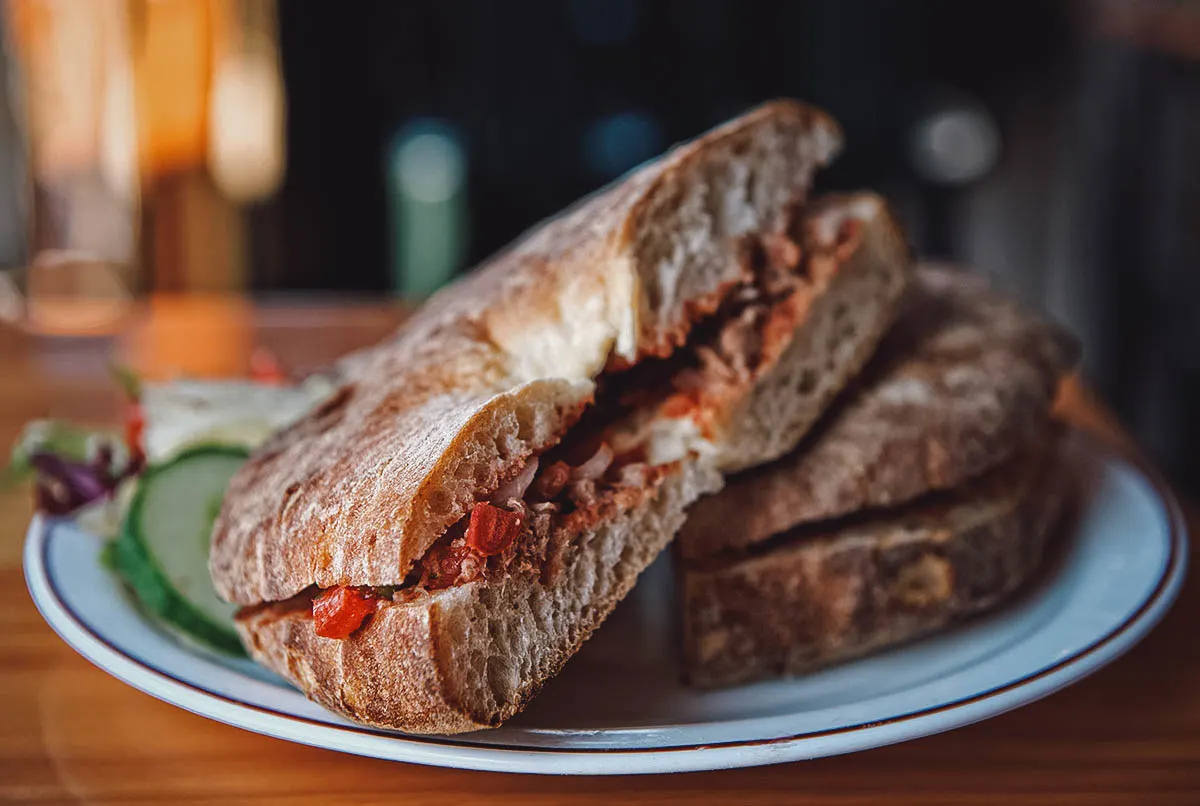
Photo by RenataA
3. Aljotta
Aljotta refers to a type of fish soup popular in Maltese cuisine. It’s a lemony and garlicky soup that becomes especially popular during Lent when meat is forbidden.
This delicious Maltese fish soup has its roots in French bouillabaisse but with the addition of mint, lemon, and rice. It’s made with whole small fish (like rockfish) with the head, tail, and fins intact to achieve as much flavor as possible. The fish is combined with garlic, fried onions, tomatoes, mint, bay leaves, and rice before being garnished with parsley and a squeeze of lemon juice.
When done right, aljotta is one of the most delicious soups in Maltese cuisine. According to this Times of Malta author, she gauges the quality of new restaurants in Malta by getting a taste of their fish soup.
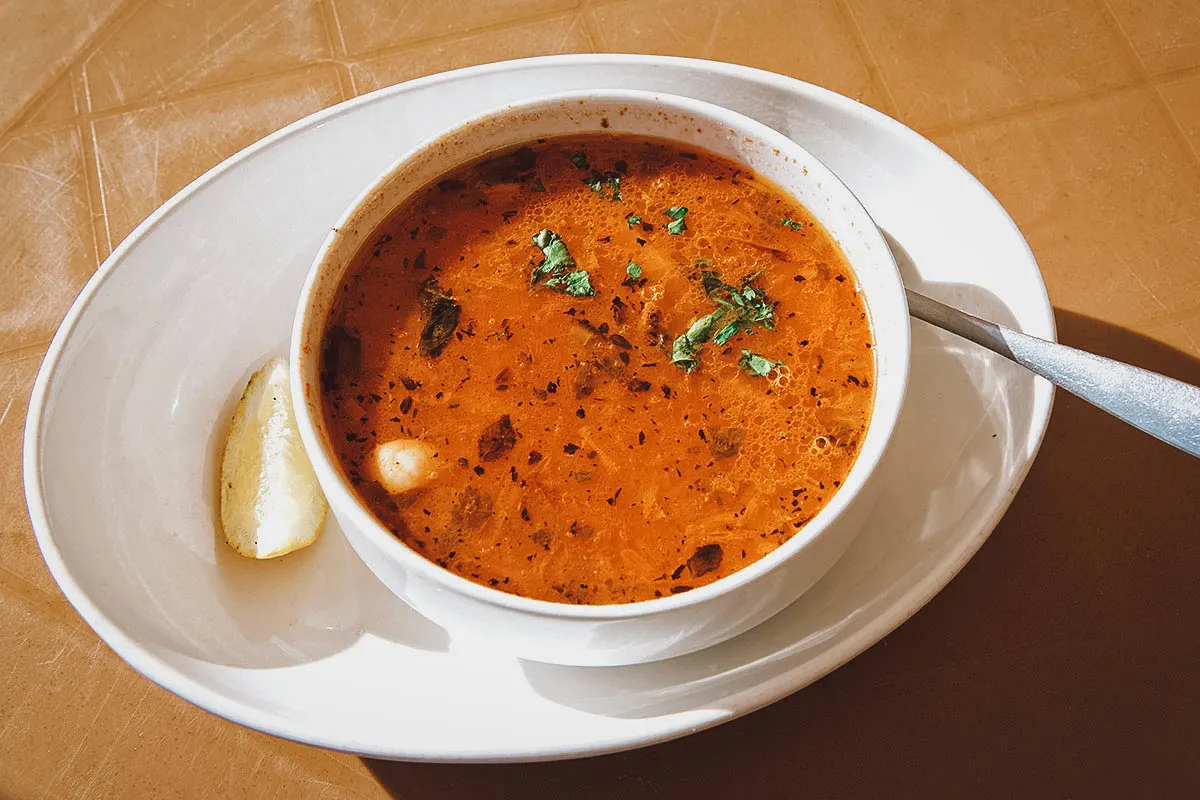
Photo by RenataA
4. Bigilla
Bigilla is a traditional Maltese dish made with mashed tic beans as its primary ingredient. Known locally as ful ta’ Ġirba, it’s a type of bean that’s very similar to broad beans but smaller, darker, and with a harder skin.
Recipes for bigilla vary but it’s typically made with tic beans, olive oil, garlic, herbs, and seasonings. Depending on the cook, other ingredients like chili, capers, and lemon juice can also be added. The beans are usually soaked in water for at least 24 hours to soften them up before cooking.
Bigilla is eaten as a dip or spread with bread or Maltese crackers like galletti.
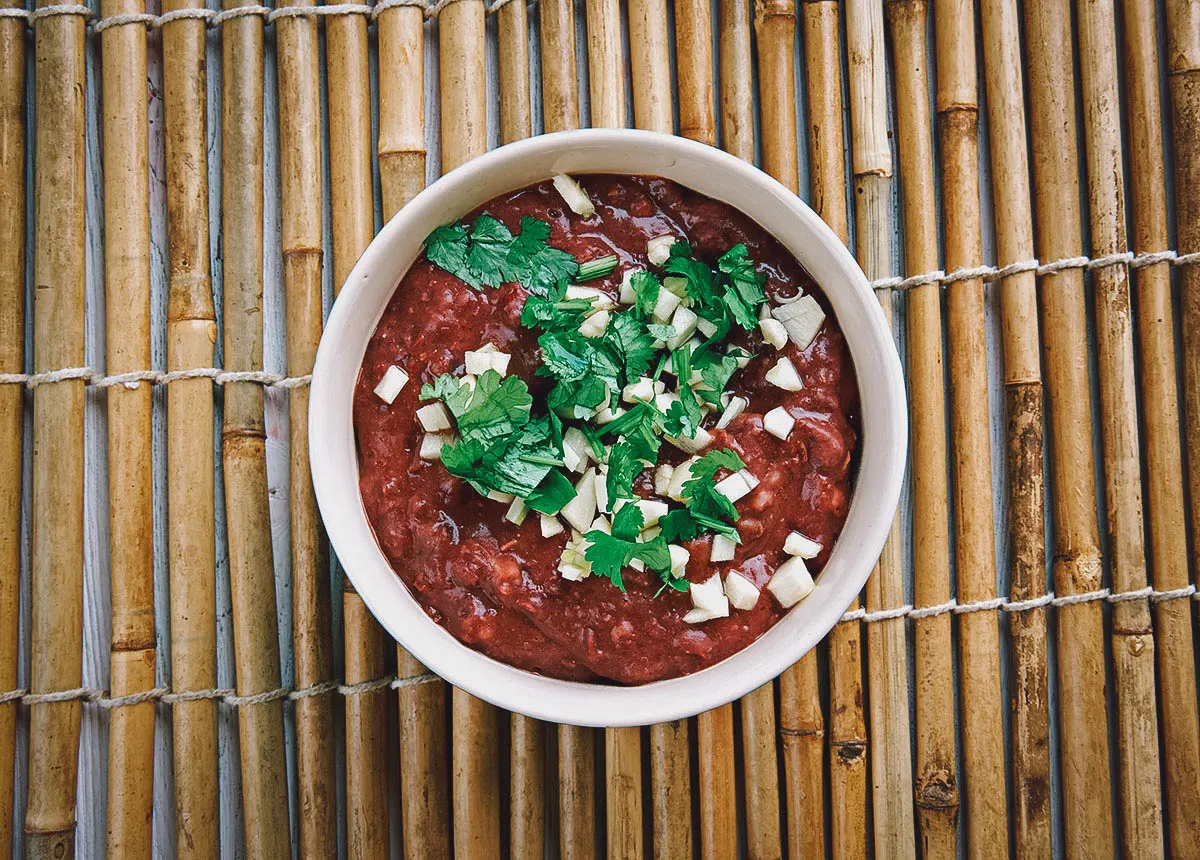
Photo by fanfon
5. Imqarrun il-forn
If you like baked pasta dishes, then you’re going to love imqarrun il-forn. Like many Maltese dishes, it’s a beloved classic with its roots in Italian cuisine.
Imqarrun il-forn is a traditional Maltese baked pasta dish made with tubular pasta like penne or rigatoni. The pasta is coated in a rich meat- and tomato-based sauce seasoned with a host of herbs and spices like garlic, cumin, paprika, oregano, bay leaves, thyme, rosemary, and curry. For richness, eggs are usually added to the mixture.
Imqarrun il-forn is enjoyed in every Maltese household, either for lunch or dinner. The dish is baked in an oven until the top develops a nice and crunchy crust.
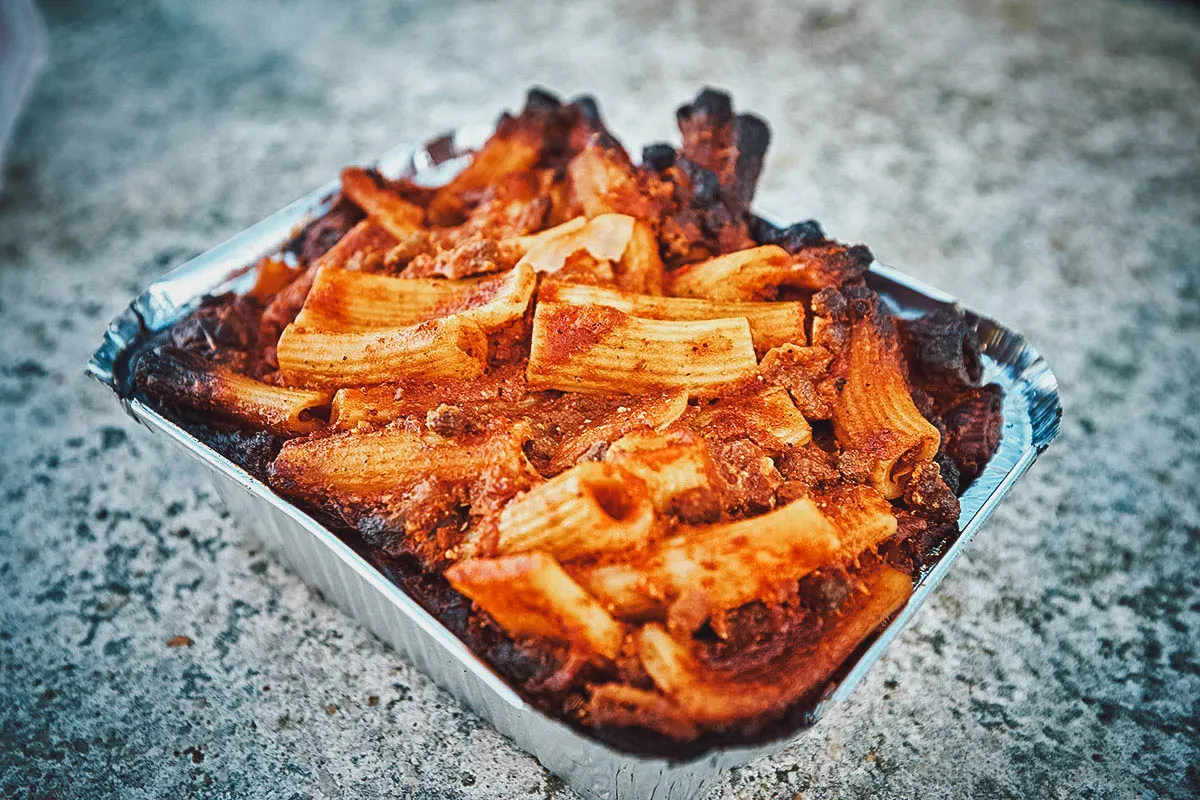
Photo by vlade-mir
6. Stuffat tal-Fenek (Maltese Rabbit Stew)
Fenkata refers to a traditional Maltese communal meal consisting of rabbit cooked in various ways. Popular Maltese dishes made with rabbit include fenek moqli (fried rabbit with garlic) and spagetti tal-fenek (spaghetti with rabbit sauce), but the most delicious has to be stuffat tal-fenek or rabbit stew. It’s a Maltese national dish made with rabbit, vegetables, and spices simmered in a rich red wine and tomato sauce.
Rabbit has a long history in Malta that goes way back to the Knights of St. John in the mid-16th century. During that time, rabbit was the predominant protein of choice among lower income families because of its price and accessibility.
These days, fenkata isn’t as common as it once was, though it continues to hold a special place in Maltese cuisine and culture. Often prepared at home, rabbit stew and other fenkata dishes are usually reserved for special occasions and family gatherings to celebrate important life events.
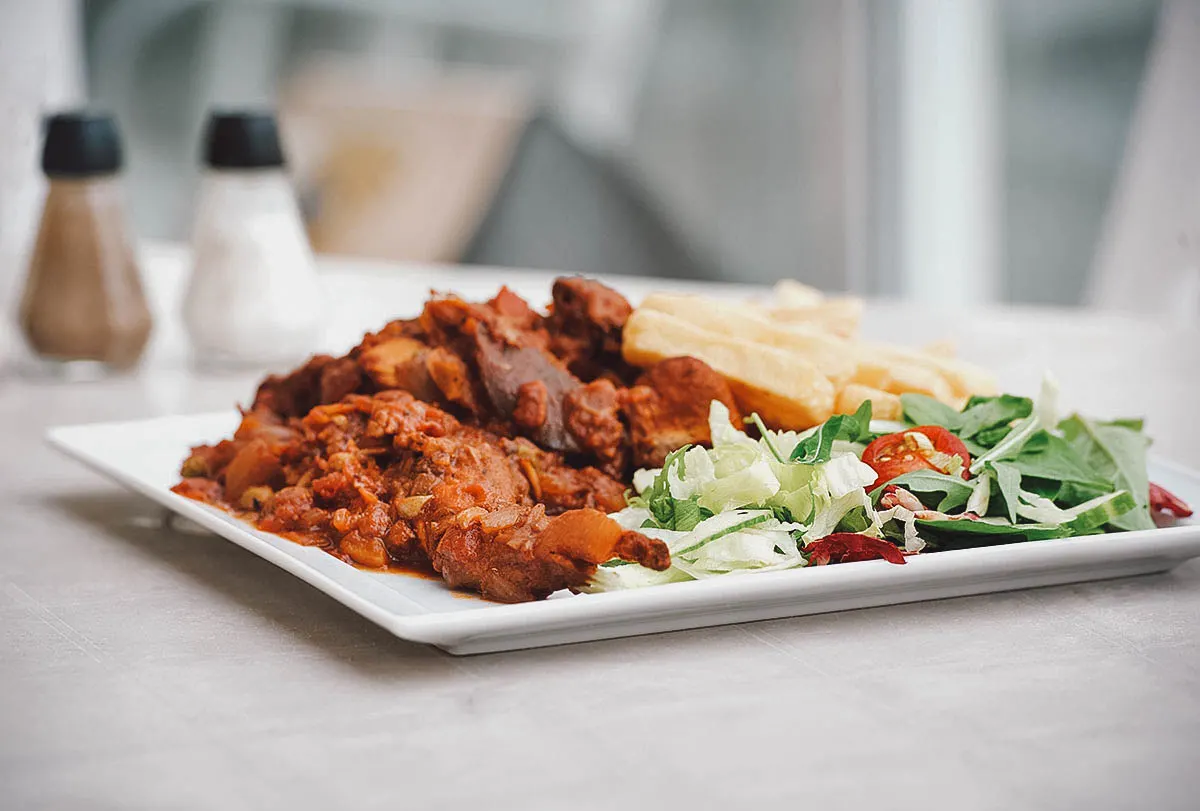
Photo by RenataA
7. Bragioli
Bragioli refers to a type of Maltese beef roll. It consists of flattened pieces of beef steak wrapped around a filling made from bacon, ground beef, hard-boiled egg, breadcrumbs, herbs, and seasonings. The beef rolls are held together with toothpicks and braised in red wine before being served with mashed potatoes and peas.
Interestingly, bragioli is also referred to as “beef olives” even though it isn’t made with any olives. It gets that name because it’s said to resemble stuffed olives when cooked.
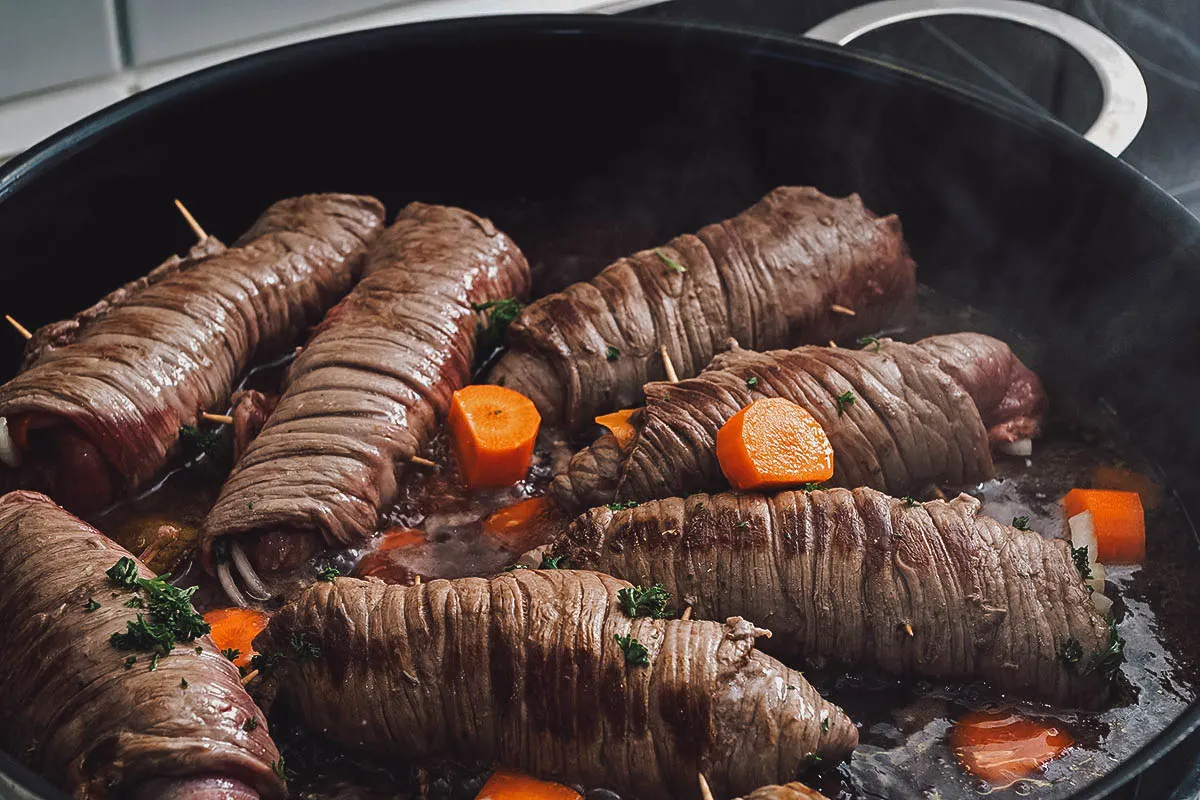
Photo by LieselF
8. Zalzett tal-Malti
Who doesn’t love a good sausage? Zalzett tal-Malti refers to a type of Maltese sausage made with fatty minced pork, garlic, herbs, pepper, and sea salt. It’s known to be garlicky and quite salty so they’re often boiled first before being fried.
According to this Maltese food blogger, it’s one of three dishes that locals miss most when living abroad, the other two being ftira and gbejniet (Maltese goat cheese).
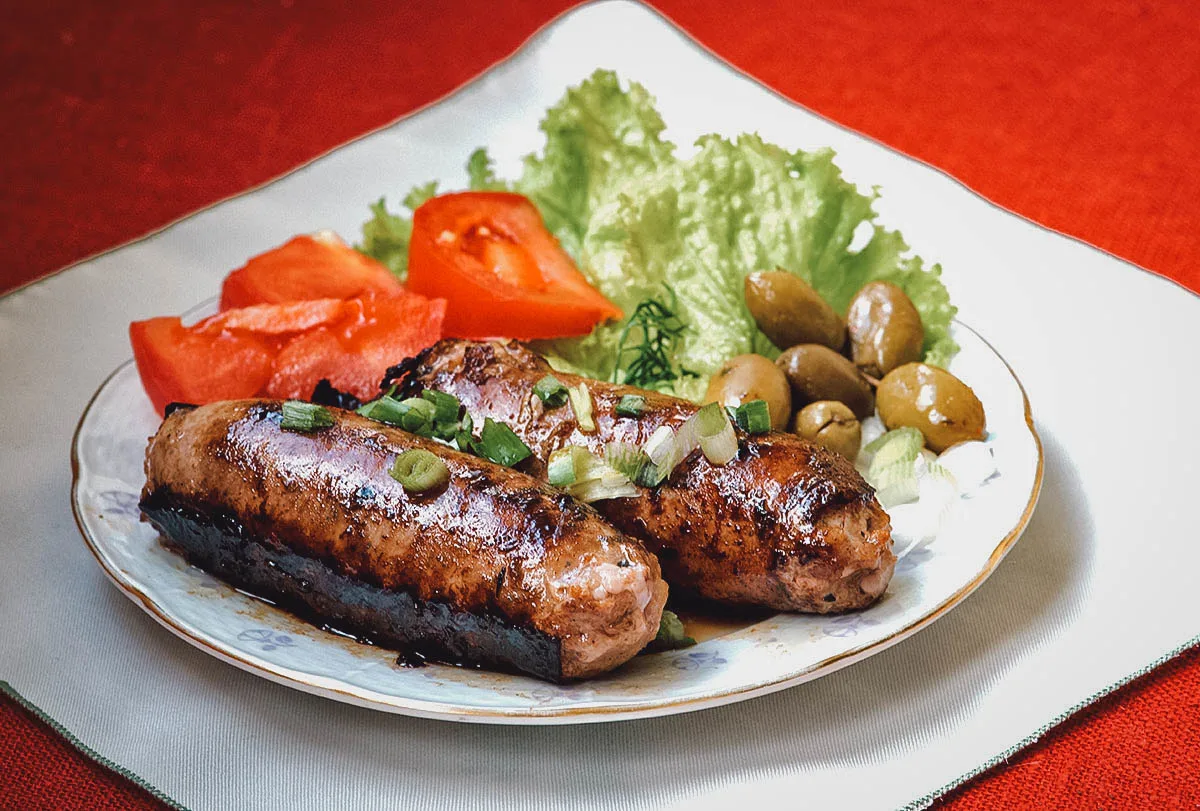
Photo by RenataA
9. Platt Malti
Platt malti doesn’t refer to any singular dish, but a selection of small Maltese dishes or appetizers. You can think of it as Malta’s answer to Spanish tapas, Italian antipasto, or Turkish meze.
Meaning “Maltese platter”, platt malti can be enjoyed at Maltese restaurants at any time of the day. It’s typically enjoyed as an appetizer but larger plates can take the place of a main course. Common dishes that make up platt malti include zalzett tal-malti, gbejniet, sun-dried tomatoes, and bigilla paired with galletti.
Like tapas or pintxos, platt malti isn’t just a platter of food. It’s a social event and a key part of Maltese culture and cuisine.
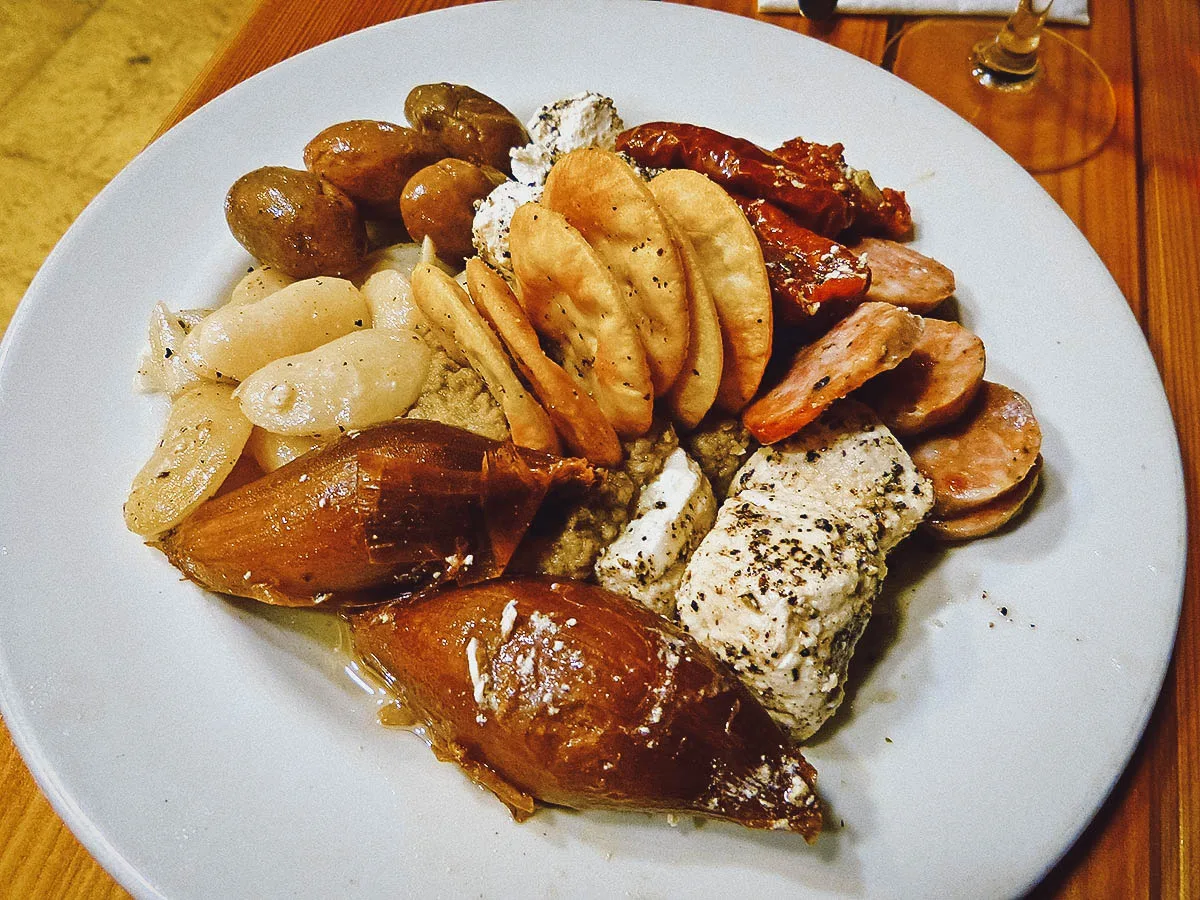
Photo by alizadastudios
10. Kannoli tal-Irkotta
As described, Sicilian cuisine has had a significant influence on Maltese cuisine. One of the best examples of this is kannoli tal-irkotta. It’s the Maltese version of the cannolo, an iconic Italian pastry made with fried pastry shells stuffed with a sweet and creamy ricotta filling.
Kannoli is a popular and widely consumed dessert in Malta. It’s one of those contentious dishes where everyone has an opinion on who makes the best. If you like cannoli and want to try the Maltese version, then check out this article for a list of the best kannoli in Malta.
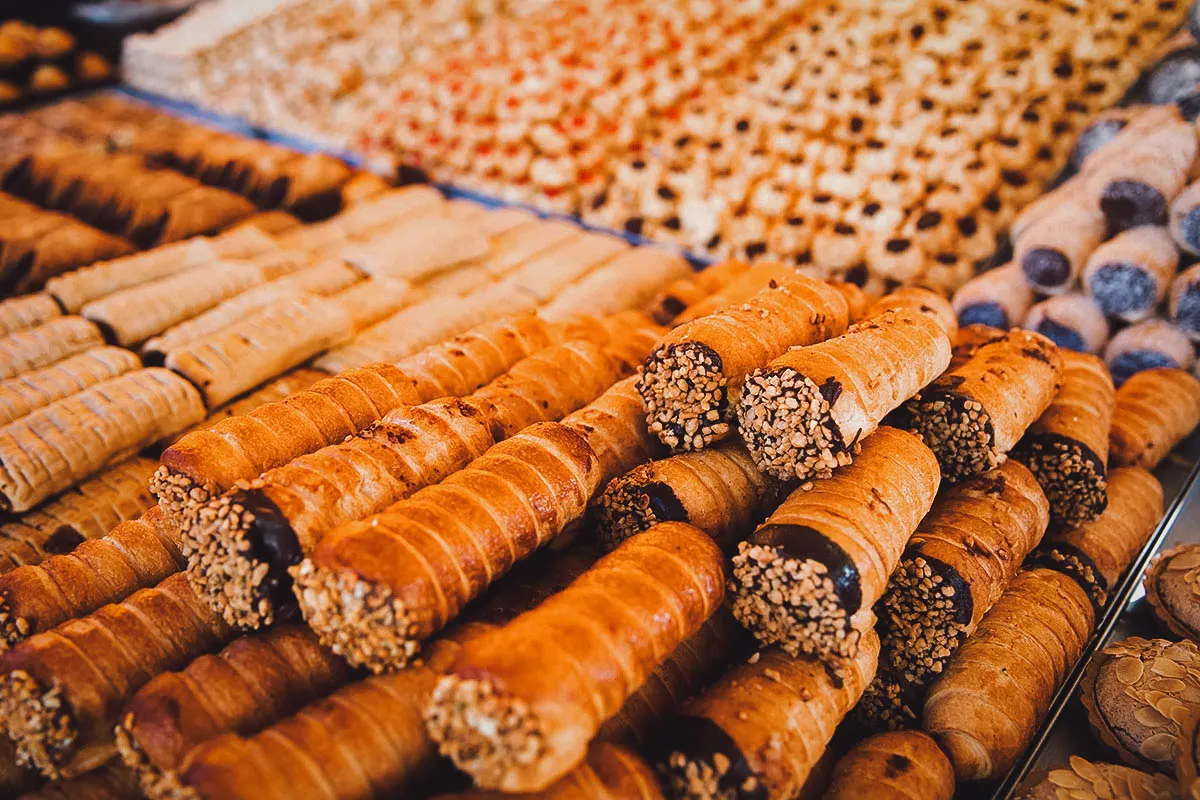
Photo by boggy22
11. Kwareżimal
Malta is a predominantly Catholic country. Some of its traditional dishes are tied to the Catholic liturgical calendar and are typically made only at certain times of the year. Kwareżimal is one of those dishes.
Kwareżimal is a traditional Maltese Lenten biscuit. Its name is derived from the Italian word Quaresima, meaning “Lent”. It contains no eggs or dairy products and is typically made with just flour, almonds, orange zest, cocoa powder, spices, and sugar.
Catholics who give up sugar for Lent may be wondering why it’s used to make a traditional Lenten dish like kwareżimal. This is because the recipe for kwareżimal was developed during a time when sugar was still considered a spice. Back then, it wasn’t something people had to abstain from for Lent.
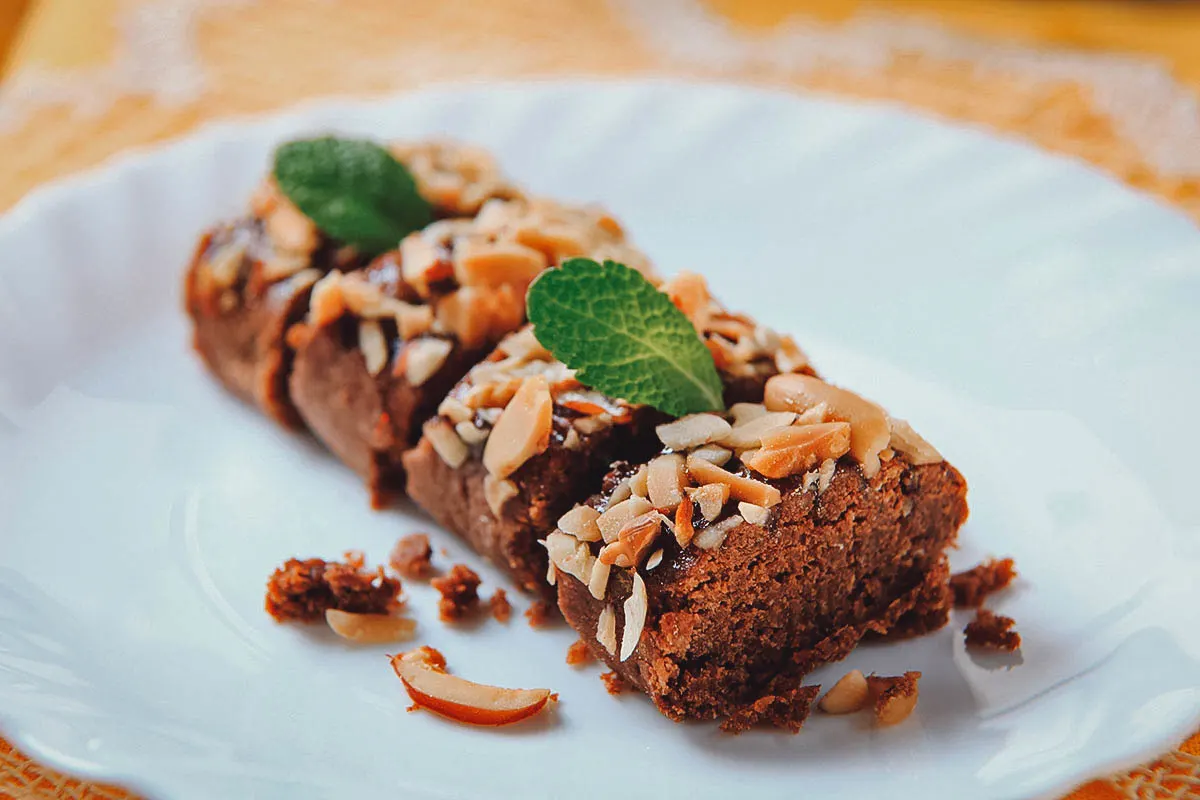
Photo by ajafoto
12. Figolla
Figolli are traditional Maltese Easter biscuits. They’re made with crumbly shortcake pastry stuffed with a marzipan-like filling. Figolli can be made into anything but they’re traditionally shaped into Catholic symbols like crosses, hearts, fish, lambs, and fish.
To prepare, a biscuit base is made using flour, butter, egg yolks, vanilla, lemon zest, and caster sugar. It’s rolled out and shaped using cookie cutters before being stuffed with a marzipan-like filling made from ground almonds, egg whites, caster sugar, and almond essence. The pastries are then baked before being topped and decorated with melted chocolate, icing, and candy sprinkles.
Figolli are traditionally baked during Holy Week and eaten on Easter Sunday. Some people will even have them blessed by a priest before giving them out to children and family.

Photo by nunochka
13. Qagħaq ta’ l-Għasel
Christmas is a festive time to begin with, but when you have delicious Christmas biscuits like qagħaq ta’ l-għasel to look forward to in Malta, then it becomes even more exciting.
Qagħaq ta’ l-għasel refers to a traditional Maltese pastry made with treacle as its main ingredient. The pastries are filled with black treacle, orange zest, semolina, spices, cocoa, and sugar before being rolled into rings and baked.
Qagħaq ta’ l-għasel literally means “honey ring” though modern versions of the pastry aren’t typically made with honey. According to this Maltese food blogger, qagħaq ta’ l-għasel was originally filled with l-qastanija which is a by-product of honey, hence the name.
Though traditionally a Christmas pastry in Malta, qagħaq ta’ l-għasel can now be enjoyed at any time of the year, often with coffee or tea or even a glass of wine after dinner.
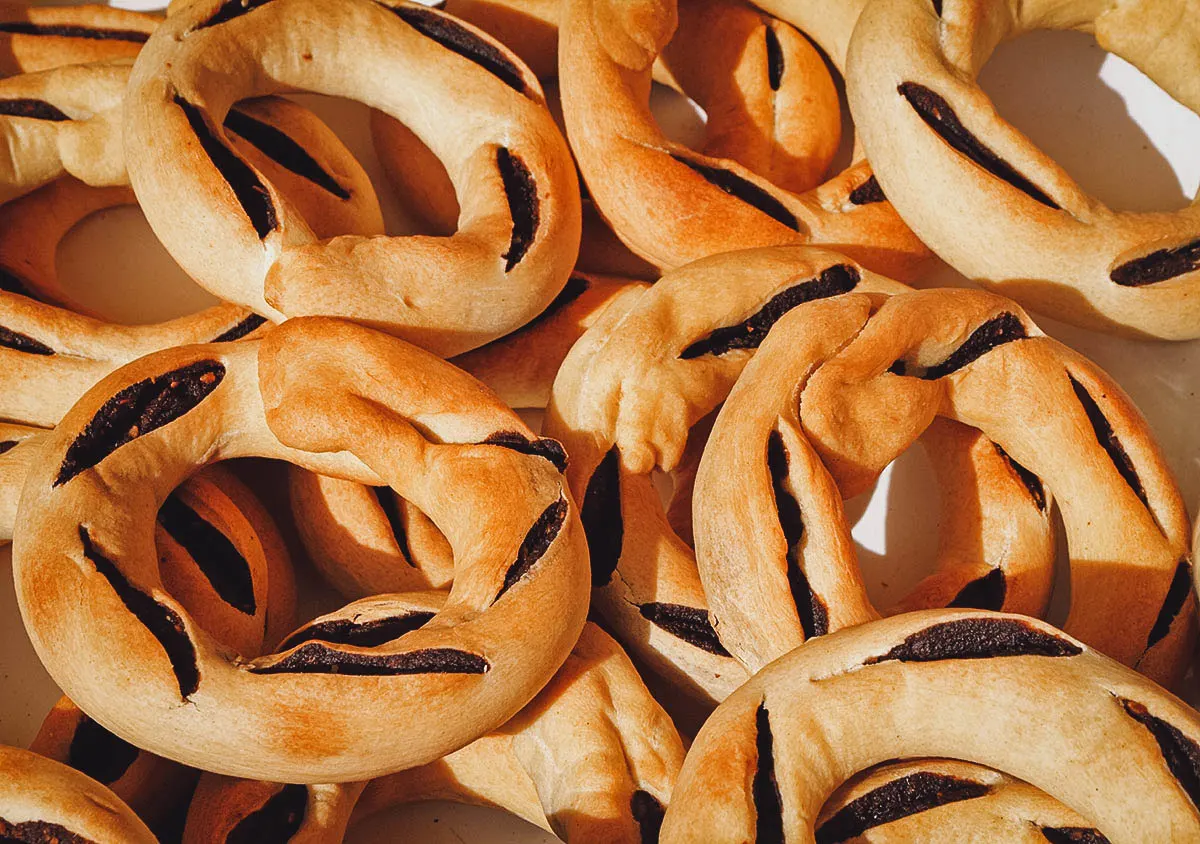
Photo by Malgorzata_Kistryn
14. Panettone
Like kannoli, panettone is a great example of the Italian culinary influence on Maltese food. A type of Christmas sweet bread from Milan, panettone has become a Christmas tradition in many parts of the world, including Malta.
Panettone is known for its hefty size and tall dome-like shape. It’s made with an acidic cured dough – similar to sourdough – and filled with an assortment of dried fruits, raisins, and candied citrus peels. Served in vertically cut wedges, panettone is often enjoyed with hot beverages or sweet wines.
As important a Christmas tradition as panettone has become in Malta, it apparently has its detractors. Click on the link to learn why this Maltese author calls panettone “literally the worst thing on the face of the earth”. The hate is real.
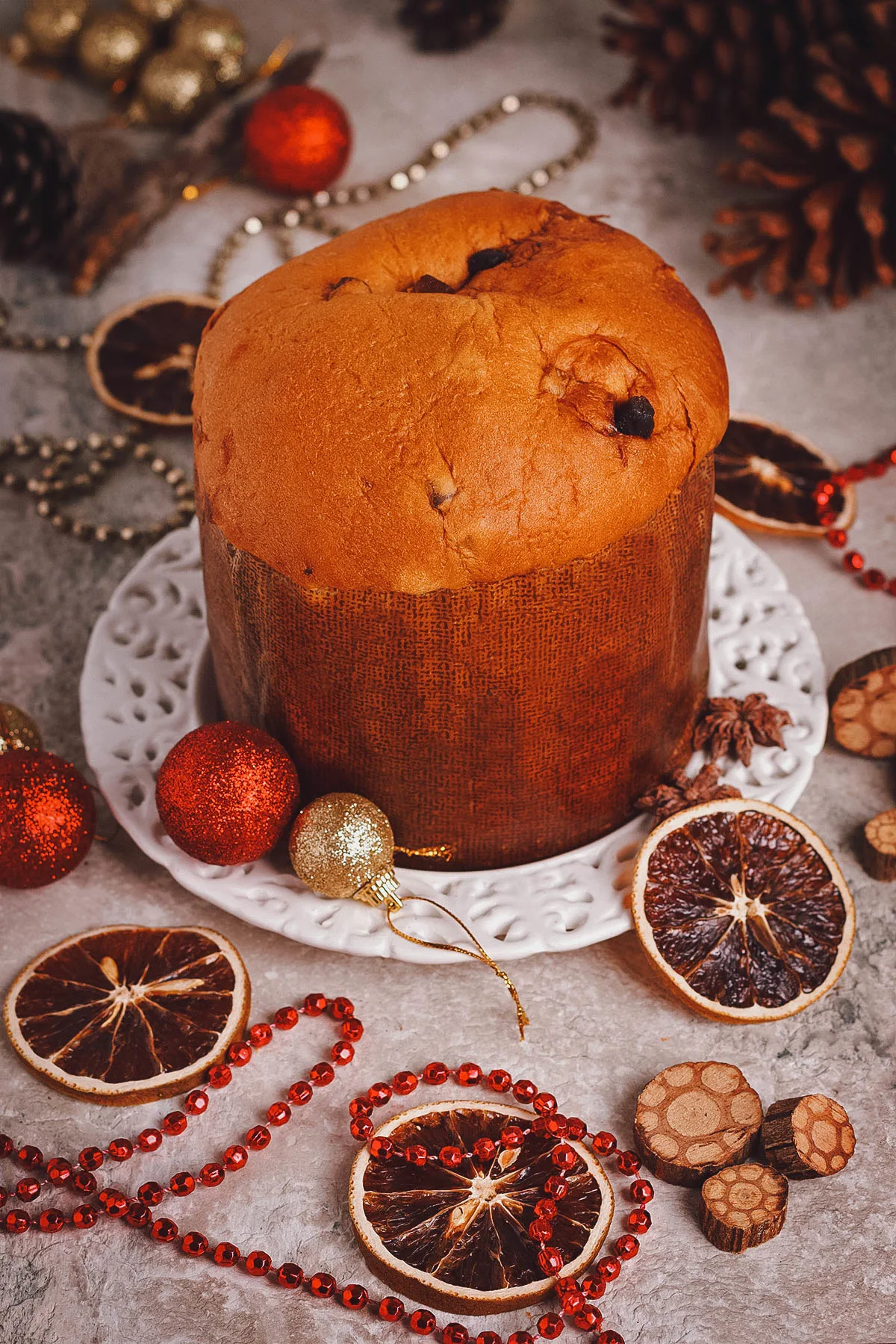
Photo by jantroyka
15. Naspli
Naspli is the Maltese word for the loquat, a fruit indigenous to southeastern China and Japan. Also known as the Japanese plum or Chinese plum, it’s known for its sweet and slightly tart citrusy flavors. Some people describe it as a cross between an apricot, apple, and pineapple with the texture of a peach when fully ripe.
The earliest European record of the loquat dates back to the the 16th century but it probably wasn’t introduced to Malta until the mid-1800s. Naspli trees typically bloom in autumn and produce ripe fruit in April and May.
Naspli fruits are typically eaten fresh but they can also be made into jam or used as a topping on pies and crumbles.
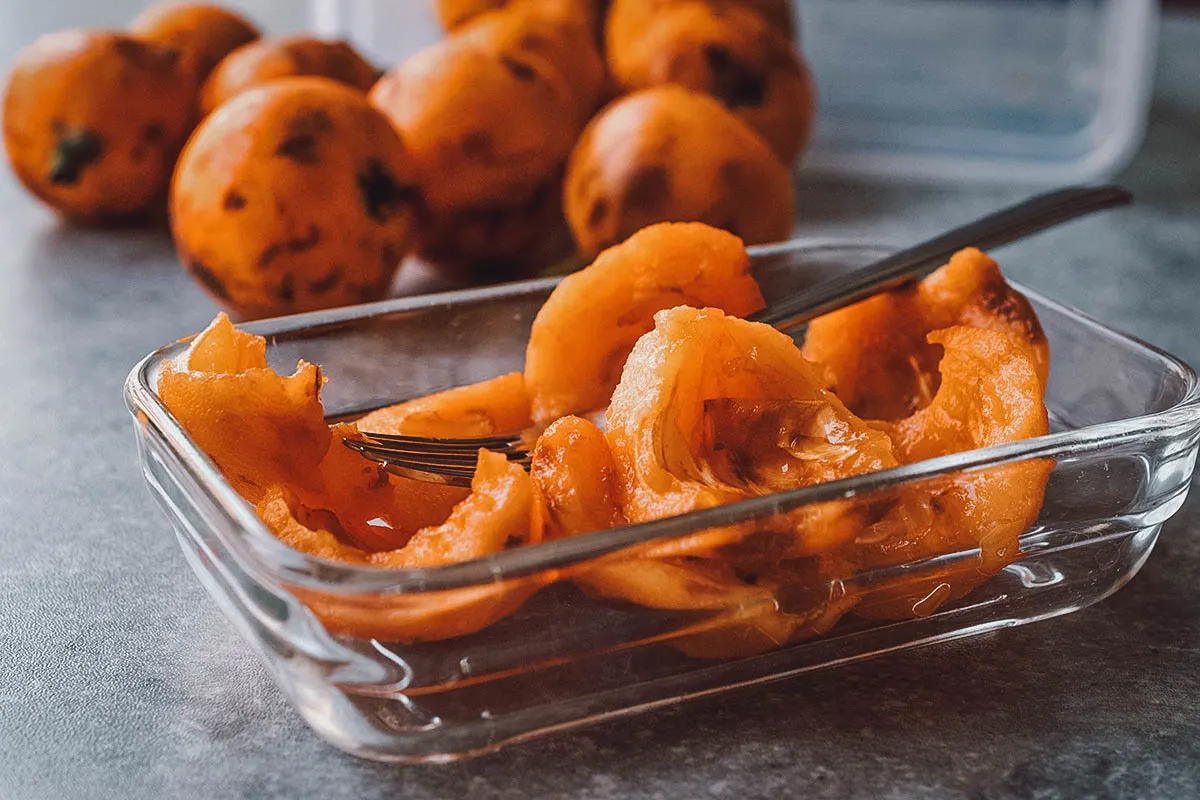
Photo by Alp_Aksoy
MALTESE FOOD TOURS
Experiencing the local cuisine on your own is always fun, but no one knows Maltese food better than a local. What better way to experience the best of Maltese cuisine than by going on a guided food tour? A local will take you to the city’s best spots so all you have to do is listen, follow, and eat. Check out Get Your Guide for a list of Maltese food tours in Valletta, Gozo, and other destinations in Malta.
FINAL THOUGHTS ON MALTESE FOOD
With a paltry fifteen Maltese dishes on this list, it goes without saying that this guide is a work-in-progress.
My friend mentioned other interesting-sounding dishes like ħobż biż-żejt (open-faced sandwiches made with Maltese bread), torta tal-lampuki (lampuki pie), and soppa tal-armla (widow’s soup). Torta tal-lampuki, a Maltese fish pie made with mahi-mahi or dolphin fish, looks especially delicious so be sure to look for that.
She didn’t end up getting that apartment in Valletta but it’s safe to say that her first visit to Malta won’t be her last. With food this good, I’m pretty sure she’s already planning her next trip back.
If you enjoy mild Mediterranean weather and have a fondness for architecture, history, and delicious food, then Malta is definitely for you.
Disclosure
Some of the links in this Maltese food guide are affiliate links. If you make a booking, then we’ll make a small commission at no extra expense to you. As always, we only recommend products and services that we use ourselves and firmly believe in. We really appreciate your support as it helps us make more of these free travel and food guides. Thank you!
Cover photo by RenataA. Stock images via Depositphotos.


James Vella Clark
Tuesday 22nd of March 2022
Interesting article. Thank you. For the record, it's 'Qaghaq' ta' l-ghasel not 'Gaghak'. And Panettone is totally Italian not Maltese. I would also check Imqarrun il-forn (baked macaroni). It's the photo marked as 'Timpana'). I believe Timpana looks different.
Prissy
Saturday 20th of January 2024
@James Vella Clark, timpana is similar. The same but covered with dough crust. My mom never made it with the crust so I prefer without. But the noodles must be burnt to a crisp on top. Everything else seems correct except for the panettone. Missing the dessert imqerat.
JB & Renée
Tuesday 22nd of March 2022
Many thanks for your insightful comment James. I've updated the post based on your feedback. Cheers.